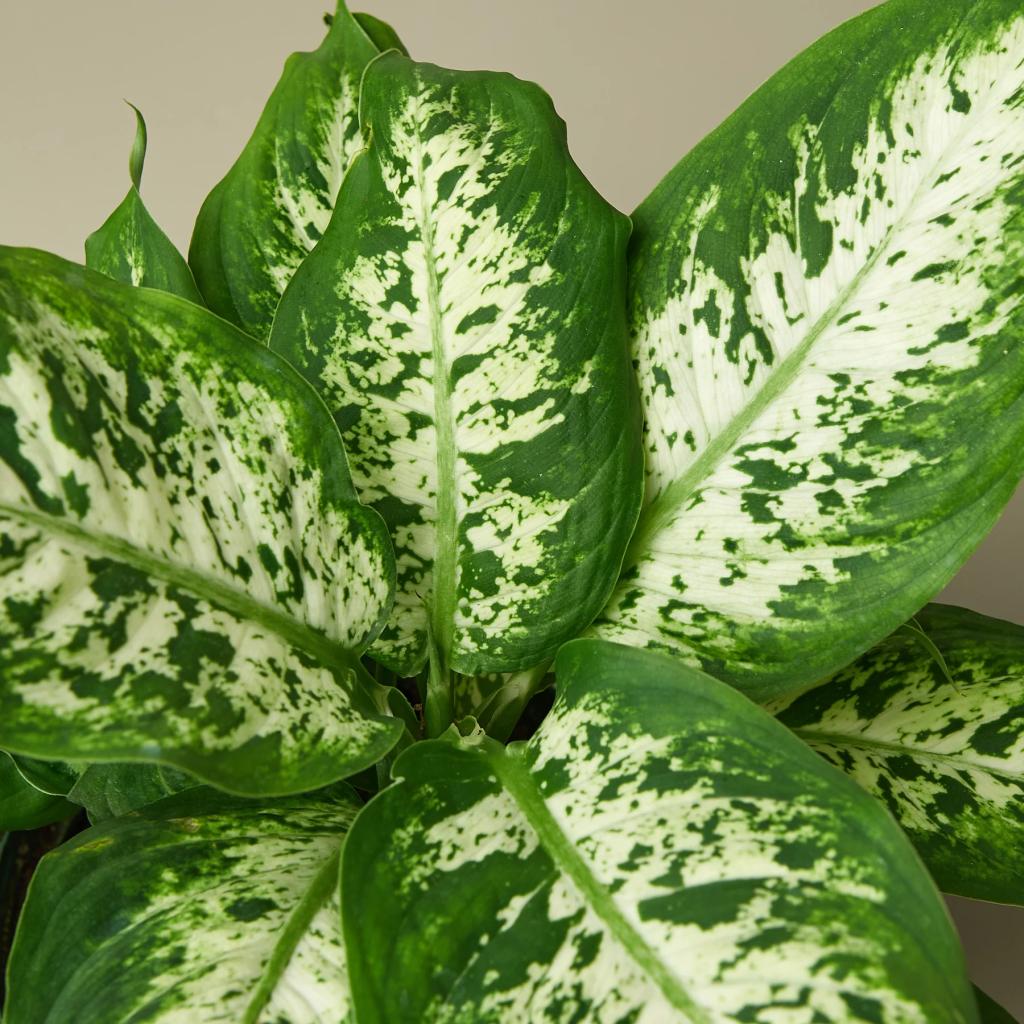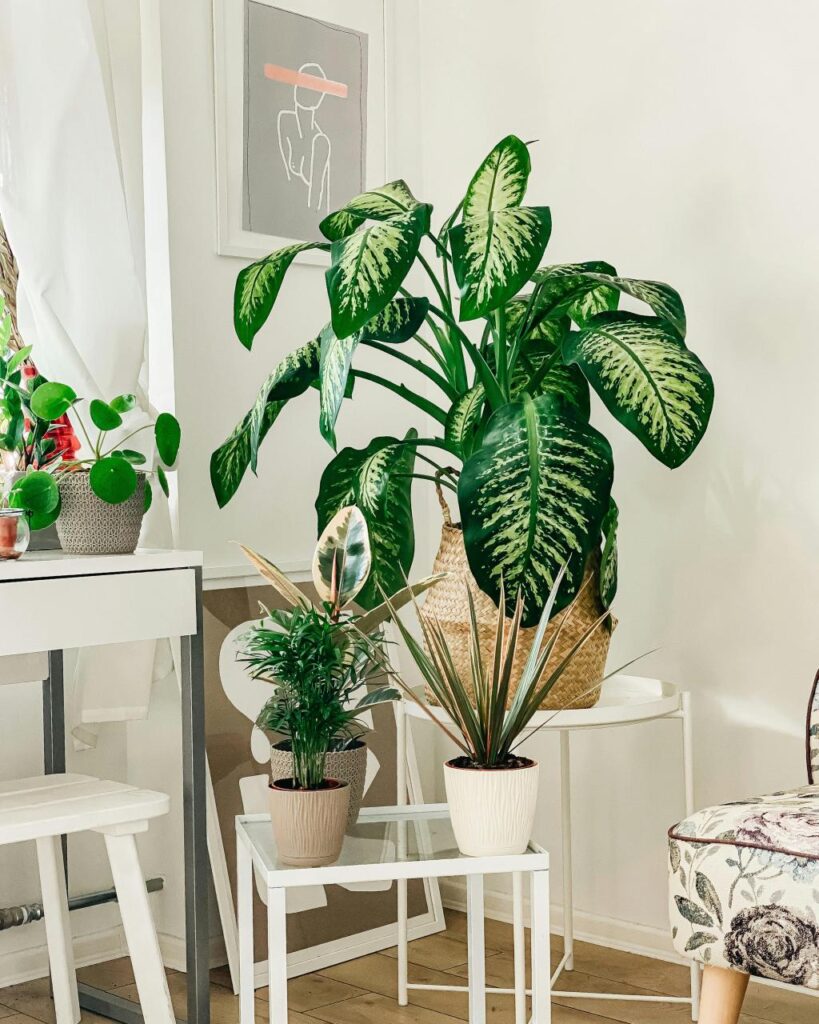The original origin of the dieffenbachia is South America. Named as a tribute to the Vienna Botanist Joseph Dieffenbach, who brought this bright patterned beauty to Europe in the 19th century after his expedition to Brazil.
Care guide
Water
Because it is a tropical plant with large leaves that require relatively much moisture, it is important to always keep the soil slightly moist. You can let the plant dry a little before watering again, make sure that the roots do not stay in the water because of the root rot that occurs then, in the growth period that runs from March to August. Water slightly more in the summer than in the winter.
Spray the dieffenbachia regularly to remove dust from the leaves and prevent vermin. Spraying also promotes the quality and decorative value of the houseplant.
A Dieffenbachia has few problems with discolouring leaves. With too much water, the leaves can get brown or yellow edges. Give less water in this case.
Light
The Dieffenbachia does well in a light sunny spot in the home or office. Prefer no direct sunlight. With too much sunlight, the leaves will turn yellow. Places the Dieffenbachia a little further from the window.
Temperature
15 ° C during the day
12 ° C at night
Ideal temperature is between 18-24 °C
Nutrition
Only moderately feed the Dieffenbachia in the spring and summer. Never give too much this can lead to burning of the roots. Check the package for the correct dosage.
Pruning
Due to its compact habit, you do not have to prune a Dieffenbachia. To preserve the decorative value of the plant, it is advisable to simply cut old and / or dead leaves at the stem.
Additional information
Big leaves are always equal to Good for your lungs! Dieffenbachia’s long leaves are one of our favourites to filter household toxins and pollutants from the air.
Fairly fast growing and can reach between 1m and 1m 20.
Toxicity
The Dieffenbachia is a poisonous plant. If you have been in contact with the sap of the plant or the green fruits, it is advisable to wash your hands thoroughly, consult your home or veterinarian!
Diseases
The Dieffenbachia is susceptible to mealybug. Regular spraying helps prevent mealybugs. To firmly tackle mealybugs, we recommend that you use a chemical or biological pesticide.
Repotting
It is best to repot a Dieffenbachia once every two years in a larger pot. The best period for repotting is spring or immediately after purchasing the plant. A larger pot will stimulate growth and the advantage is a larger buffer soil so that the water is more spread and there is less chance of root rot. Always take a pot that is 20 to 25% larger and do not use Hydro pellets on the bottom of the pot. It is best to use a plastic insert cover for large pots.
Gallery




